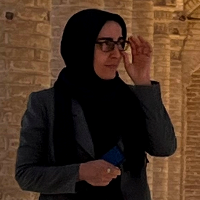A Cultural Analysis of the Role of “Rose Flower” in the Horse Caparisons of Zand Dynasty Paintings Maintained in the Brooklyn Museum
Author(s):
Article Type:
Research/Original Article (دارای رتبه معتبر)
Abstract:
Due to the significant role of quadrupeds before the advent of vehicles, horse caparisons, and saddles have been intricately crafted throughout various eras. The history of carpets has focused more on underlays, and other weaves have received less attention. Horses are depicted as mounts in numerous paintings, often accompanied by riders and accessories like saddlebags or caparisons. Corresponding to the transformation of the role and design of artworks in the era of Zand, the clothing of the quadruped has also changed. The article examines the stylistic motifs of horse caparisons, a prominent feature in the paintings of the Shiraz school during the Zand era. It seems that “Rose” is imprinted on the luxurious clothing of the quadruped in the Zand era as a meaningful sign. The criteria for applying the adjective “luxurious” is the themes of the works. The “Rose Flower” pattern or the “European Flower” can be seen on the copies of 6 study samples of paintings in the Brooklyn Museum: Khusraw Discovers Shirin Bathing, Bahram Gur and Azadeh, Queen Shirin Visiting the Sculptor Farhad, Sultan Sanjar and the Old Woman, and Hunter on Horseback Paintings. The research employs a qualitative approach with descriptive and analytical methods grounded in historical context. The collected information is the product of library studies and observations of visual documents on the Brooklyn Museum website. This research reveals that the “Red Flower,” also known as the “Farang Flower” or “European Flower,” was a prominent element in the luxurious clothing of Zand era mounts. The role of the “Red Rose” on the clothing of the quadruped bears a ceremonial sign and has a significant connection with the themes of the paintings. Therefore, in the Zand period, the motif of the rose flower (European flower) was woven on the saddles of the court horses. Another result is that the European flower was not an imported pattern among Iranian woven motifs; Rather, it is the same red flower renamed under the influence of European design.
Keywords:
Language:
Persian
Published:
Journal of Industrial Arts, Volume:3 Issue: 1, 2023
Pages:
49 to 60
https://magiran.com/p2784197
مقالات دیگری از این نویسنده (گان)
-
Abu al-Hasan Khan Ghaffari Kashani’s Miniatures: Visual Documents for the Overt and Covert Aspects of Woven Products in the Zand Period
*
Kashan Shenasi Journal (Studies on Kashan), -
analysis the border of garden rugs according to the analogy principle
Nahid Taghinezhad, *, Mohammad Reza Kheirollahi
Journal of Visual and Applied Arts,



